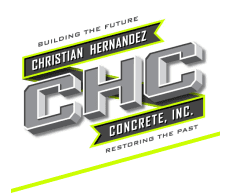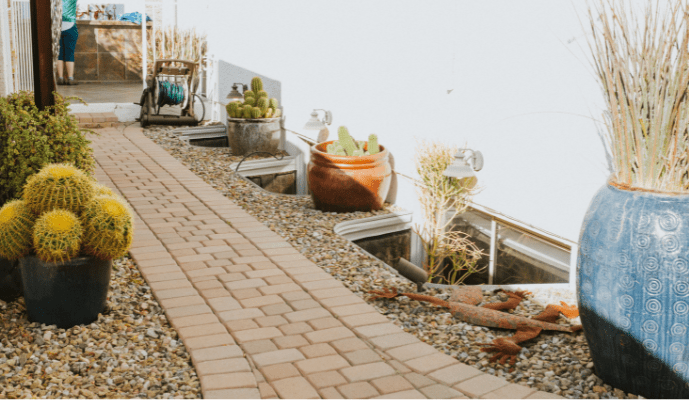When designing an outdoor space, hardscape materials are essential for creating functional and aesthetic features. Whether you’re planning to build a patio, walkway, retaining wall, or outdoor kitchen, choosing the right hardscaping material can make all the difference. From natural stone to concrete pavers, hardscaping transforms an ordinary yard into a beautiful and durable outdoor living space. In this comprehensive guide, we’ll explore the best hardscape materials, how to choose them for your project, and the different factors that will impact your decision.
What Are Hardscape Materials?
Hardscape materials are the solid, non-living elements used in landscape design to create structures like patios, walkways, retaining walls, and other durable surfaces. Unlike soft landscaping elements such as plants, soil, and grass, hardscape materials include stone, concrete, bricks, and wood. These materials are crucial for creating functional outdoor spaces that withstand weather conditions and foot traffic over time.
Hardscape products range from sleek concrete slabs to permeable pavers, offering versatility in design and function. The selection of hardscaping materials is one of the most important decisions in landscape design, affecting everything from curb appeal to longevity.
Common Types of Hardscape Materials
1. Concrete
Concrete is one of the most popular choices for hardscaping projects due to its durability, versatility, and affordability. Concrete pavers and slabs are commonly used for patios, walkways, and driveways. They come in various shapes, colors, and textures, making them suitable for nearly any design aesthetic.
Concrete patios and walkways provide a clean, modern look and can be customized to mimic the appearance of other materials like natural stone. Installing pavers made from concrete is a cost-effective solution for creating large, uniform surfaces.
2. Natural Stone
Natural stone is a premium hardscape material that adds timeless beauty to outdoor spaces. It includes options like granite, sandstone, limestone, and mixed Ozarka stone. Stone landscaping is often used for walkways, retaining walls, and pool decks. These materials are incredibly durable and withstand the elements better than many other materials.
Although natural stone can come at a rather reasonable price, it offers an upscale appearance that enhances curb appeal. It’s an excellent choice for high-end landscape designs where aesthetics are a top priority.
3. Brick
Brick is a classic choice for creating a warm, traditional look in your outdoor living space. Whether you’re installing a brick patio or using brick for walkways, it’s a durable and timeless option. Bricks also offer excellent customer service, meaning they are easy to replace and repair when damaged.
4. Gravel
Gravel is one of the most budget-friendly hardscape materials available. It’s commonly used for garden paths, walkways, and driveways. Gravel allows water to permeate the ground, making it an eco-friendly choice that promotes proper drainage.
Gravel’s affordability and versatility make it an excellent option for large outdoor spaces. Its rustic charm works well in garden areas and for less formal settings, like a backyard retreat.
5. Paving Stones
Paving stones offer a more natural look and feel compared to concrete or brick. They’re often used for patios, walkways, and pool decks, as they provide a textured, non-slip surface. Paving stones can be made from concrete, natural stone, or clay, giving you a wide range of options to choose from. These materials are perfect for creating a cohesive landscape design.
6. Retaining Walls
Retaining walls are a vital element in any landscape design that involves uneven terrain. Retaining walls help prevent erosion and create level areas for planting, patios, and other hardscape features. Materials for retaining walls include natural stone, concrete blocks, and other hardscaping materials.
Using wall systems in landscape design ensures both aesthetic appeal and structural integrity. A well-built retaining wall not only supports your yard’s functionality but also adds depth and dimension to the outdoor space.
How to Choose the Right Hardscape Materials for Your Project
Choosing the right hardscaping materials for your project depends on several factors, including the purpose of the structure, the budget, and the overall look you want to achieve. Below are some key considerations:
1. Purpose
Before selecting a hardscape material, think about the primary function of the space. Are you creating an outdoor patio for entertaining or building a retaining wall to manage soil erosion? For heavy-traffic areas like driveways and walkways, you’ll want durable options like concrete or natural stone. For aesthetic features like garden paths or decorative patios, softer materials like brick or gravel can be more suitable.
2. Climate
Weather conditions play a significant role in the longevity of hardscape materials. If you live in an area that experiences freezing and thawing cycles, choose materials that can expand and contract without cracking, such as natural stone or concrete pavers. Concrete, for instance, is ideal for areas with harsh weather, while more delicate materials like brick may require additional maintenance in extreme climates.
3. Budget
Your budget will heavily influence your choice of hardscape materials. While natural stone and high-end concrete pavers can be more expensive, there are more affordable options like gravel and basic concrete slabs that still offer durability and style. Choosing materials that balance cost with quality ensures that you’ll achieve your desired look at a reasonable price.
4. Aesthetic Appeal
Hardscaping materials come in various styles, textures, and colors. Your choice should complement the existing landscaping and architecture of your home. For example, if your house has a rustic or natural aesthetic, you might opt for natural stone or gravel. If you’re aiming for a modern, minimalist look, sleek concrete pavers or slabs may be the better choice.
5. Maintenance Requirements
Consider the long-term maintenance involved with each type of hardscaping material. Some materials, like brick and natural stone, require occasional sealing and repair. Others, like concrete, are relatively low-maintenance. Understanding the upkeep required will help you select materials that fit your lifestyle.
6. Environmental Impact
Sustainability is becoming increasingly important in landscaping design. Choosing eco-friendly hardscape materials like permeable pavers, which allow water to pass through, can help reduce runoff and promote natural groundwater replenishment. These options not only benefit the environment but also enhance the functionality of your outdoor space.
Hardscaping Ideas for Your Outdoor Living Space
Hardscape design isn’t just about functionality—it’s also an opportunity to create beautiful outdoor spaces where you can relax, entertain, and enjoy nature. Here are some ideas to inspire your next project:
Outdoor Kitchen
An outdoor kitchen made with durable hardscape materials like concrete or natural stone can transform your backyard into a functional entertaining space. Pair it with a patio or brick walkway for a cohesive look.
Fire Pits
Adding a fire pit to your outdoor living space creates a cozy gathering spot for friends and family. Fire pits can be constructed using a variety of hardscape materials, including stone, brick, and concrete pavers, depending on your style and budget.
Water Features
Incorporating water features like fountains, waterfalls, or small ponds into your hardscape design adds a soothing ambiance to your garden or patio. Natural stone or permeable pavers can be used to frame these features beautifully.
Walkways and Paths
Walkways made from stone, brick, or concrete pavers can add both practicality and charm to your landscape. Whether leading to a garden, pool deck, or outdoor patio, walkways help define and enhance your outdoor space.
Retaining Walls
Retaining walls can be both functional and decorative. When built with natural stone or concrete, they add depth to the landscape while helping manage soil erosion. A well-designed retaining wall can elevate the appearance of your yard while providing essential structural support.
Conclusion
Choosing the right hardscape materials for your project depends on a range of factors, from the climate to the look you want to achieve. Whether you choose durable concrete pavers, elegant natural stone, or a budget-friendly option like gravel, hardscaping transforms outdoor spaces into lasting, beautiful environments. Hardscape materials enhance the curb appeal of your home, add functionality to your yard, and ensure your outdoor spaces can withstand the test of time.
If you’re looking for professional hardscaping services, CHC Concrete provides expert design and installation services. Their team specializes in everything from patios to retaining walls and offers excellent customer service at a reasonable price. Let CHC Concrete help you bring your outdoor living space to life!

